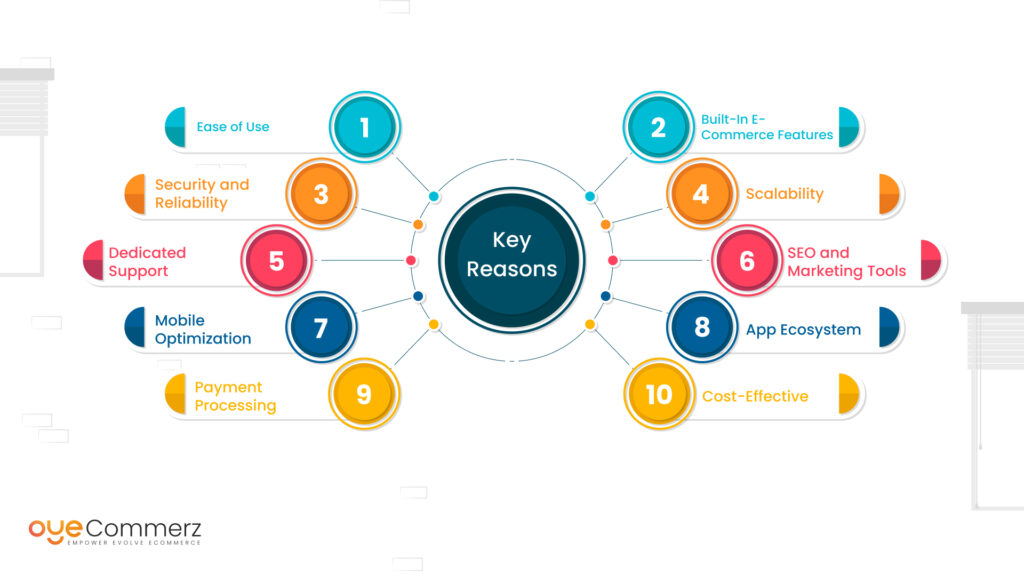Transitioning from WP to Shopify marks an exciting step toward optimizing your online store operations. As companies grow, selecting a solution that aligns with growth potential, UX, and flexibility is essential. Shopify has emerged as a favorite for online merchants, offering unmatched adaptability, security, and ease of use. In this guide, we will delve into the transformative impact of this migration, discuss the advantages, and share actionable steps to facilitate a smooth transition.
1. Top Reasons to Transition from WP to Shopify
WordPress, paired with WooCommerce, has served countless online stores. Nevertheless, as businesses scale, issues like reliance on plugins, security vulnerabilities, and technical complexities can hinder growth. Shopify, designed explicitly for e-commerce, eliminates these concerns with an all-in-one, intuitive platform. Real data back this shift—Shopify hosts over 4.4 million stores globally, with a documented 10% boost to sales conversion rates for numerous merchants post-switch.
2. Shopify's Advantages for Thriving Online Stores
Shopify’s powerful platform is tailored for scaling brands. Its standout benefits include:
- Effortless Design Flexibility: Shopify offers over 80 professionally designed themes.
- Integrated Tools: Features like Shopify Payments and integrated SEO streamline operations.
- International Expansion: Currency versatility and localization features empower brands to expand internationally.
Additionally, Shopify delivers an availability percentage of 99.98%, guaranteeing your store is always operational.
3. Getting Ready for Your WordPress-to-Shopify Transition
Before migrating, assess your current store. Analyze inventory details, client information, and SEO performance. Tools like Shopify’s Migration Kit or external tools help ease the transition. Develop a detailed strategy, making sure all assets—product descriptions, media files, and blog content—are ready for seamless import.
4. Data Migration: A Critical Step
Data migration forms the foundation for a successful platform switch. When migrating from WP to Shopify, prioritize:
- Inventory Details: SKU, item summaries, and categories.
- Client Information: Emails, order history, and preferences.
- SEO Optimization: Retain meta tags, URLs, and forwarding paths to maintain search rankings.
Use tools such as LitExtension to facilitate seamless migration while reducing mistakes.
5. Tailoring Your Shopify Store to Fit Your Brand
After the move, personalizing your Shopify store ensures it aligns with your brand. Take advantage of Shopify’s intuitive page builder to create layouts with ease. Shopify's templates are optimized for all devices, ensuring a Shopify migration pricing smooth user experience across platforms—a critical factor, given 74% of online shopping is generated by mobile visitors.
6. How to Protect Your SEO Rankings When Switching Platforms
Search engine optimization is crucial for preserving your online presence during migration. Shopify is highly optimized for search engines with organized link formatting, preloaded features, and smooth content management. Make sure you:
- Implement 301 redirects for old URLs.
- Enhance updated content with targeted phrases.
- Leverage plugins like Plug in SEO to monitor performance after the switch.
7. Post-Migration Testing
Once the migration is complete, conduct thorough testing.
Check: - Website speed (Shopify boasts faster speeds in contrast with WP).
- Functionality of payment gateways and checkout processes.
- Mobile responsiveness.
Testing ensures your store delivers a seamless shopping experience from the start.
8. Real-Life Success Story
An example of effective platform switching is Gymshark, a fitness apparel brand that moved to Shopify. Post-migration, the company experienced a 60% boost in mobile sales and reduced site downtime. This highlights the capabilities of Shopify in driving online business success.
9. Challenges and Solutions
Migration comes with challenges, such as information accuracy and reconfiguring custom functionalities. However, Shopify’s extensive assistance and external professionals make overcoming these hurdles manageable. Partnering with experienced Shopify developers helps guarantee a smooth transition.
10. Starting Your Journey with Shopify
Migrating from WP to Shopify marks a forward-thinking approach to online retail. By addressing scalability, streamlining operations, and improving buyer satisfaction, Shopify empowers businesses to succeed in challenging industries.
Final Thoughts
Transitioning from WP to Shopify offers a smart solution that can greatly enhance your online business performance. With a well-structured strategy, the appropriate resources, and professional guidance, you can unlock new success milestones.
Ready to make the leap? Let’s discuss how our Shopify migration services can transform your online store. Contact us now, or consider: Is it time to seize Shopify’s advantages for your Shopify migration experts store?
